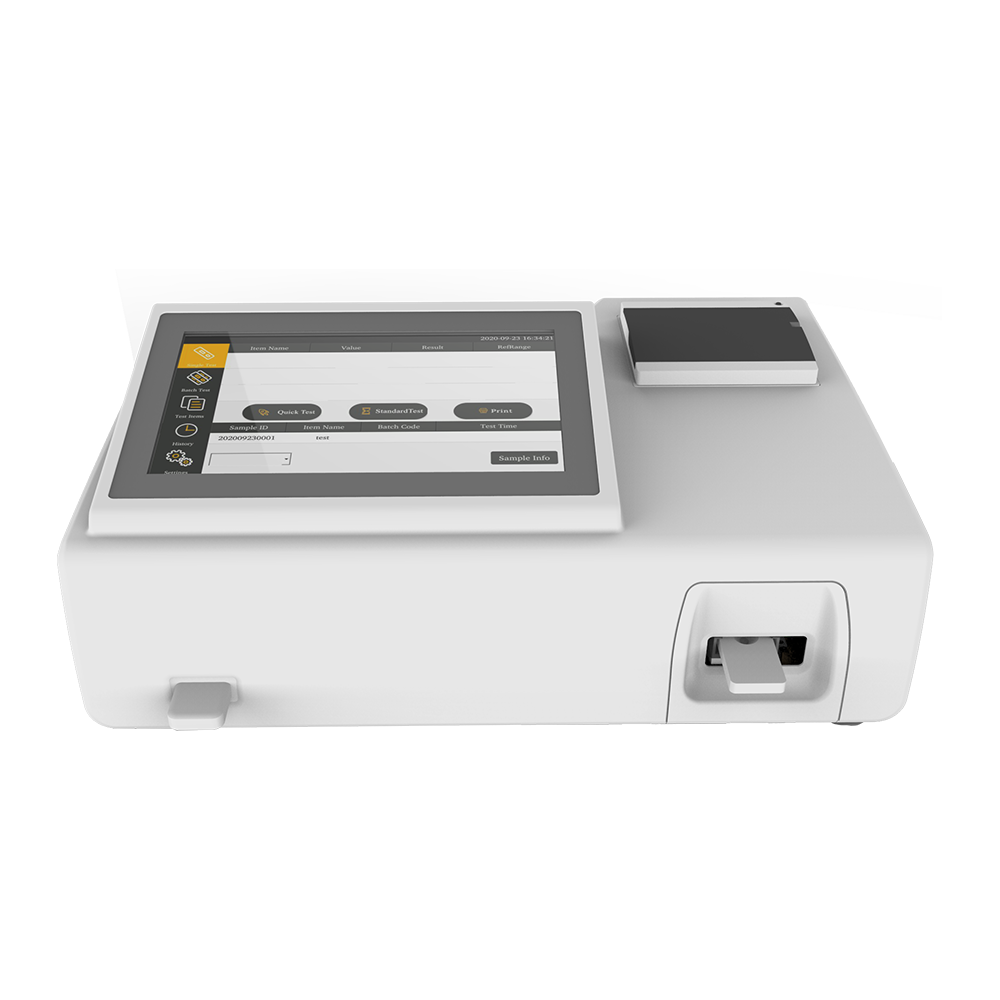Jul 01,2022
Fluorescence immunoassay analyzers are widely used in both clinical and research settings due to their sensitivity, specificity, and versatility. Here are some of their primary applications:
Clinical Applications
Disease Diagnosis:
Infectious Diseases: Detection of pathogens (e.g., bacteria, viruses) and their antigens or antibodies, such as in HIV, hepatitis, and COVID-19 testing.
Autoimmune Disorders: Measurement of autoantibodies in conditions like lupus, rheumatoid arthritis, and celiac disease.
Cancer: Detection of tumor markers (e.g., PSA, CA-125) for cancer diagnosis and monitoring.
Therapeutic Drug Monitoring:
Monitoring levels of therapeutic drugs to ensure proper dosing and efficacy, as well as to avoid toxicity (e.g., antibiotics, antiepileptics, immunosuppressants).
Endocrinology:
Measurement of hormone levels (e.g., thyroid hormones, insulin, cortisol) to diagnose and manage endocrine disorders such as diabetes, thyroid dysfunction, and adrenal disorders.
Cardiology:
Detection of cardiac biomarkers (e.g., troponins, BNP) for the diagnosis and management of acute myocardial infarction and heart failure.
Allergy Testing:
Identification of specific IgE antibodies to various allergens for the diagnosis and management of allergic conditions.
Reproductive Health:
Measurement of fertility hormones (e.g., FSH, LH, hCG) and pregnancy-related markers to assist in fertility treatments and monitor pregnancy.

Research Applications
Biomarker Discovery and Validation:
Identification and quantification of novel biomarkers for various diseases to aid in early diagnosis, prognosis, and therapeutic targeting.
Proteomics:
Study of protein expression, interactions, and modifications in various biological samples to understand cellular functions and disease mechanisms.
Pharmacokinetics and Pharmacodynamics:
Investigating the absorption, distribution, metabolism, and excretion of drugs, as well as their biological effects and mechanisms of action.
Immunology Research:
Study of immune responses, including the detection of cytokines, chemokines, and other immune mediators in various conditions and treatments.
Cell Signaling Pathways:
Analysis of intracellular signaling pathways by measuring phosphorylation states, protein-protein interactions, and other molecular events.
Genetics and Genomics:
Use in genetic screening and molecular diagnostics, including the detection of specific nucleic acids and genotyping.
Environmental and Food Safety:
Detection of contaminants, toxins, and pathogens in environmental samples and food products to ensure safety and compliance with regulations.
Advantages of Fluorescence Immunoassay Analyzers
High Sensitivity and Specificity: Enables the detection of low-abundance analytes with high precision.
Quantitative Analysis: Provides accurate quantification of analytes over a wide dynamic range.
Multiplexing Capability: Allows simultaneous detection of multiple analytes in a single sample, increasing throughput and efficiency.
Rapid Turnaround Time: Delivers fast results, which is crucial in clinical diagnostics and time-sensitive research applications.
Automation: Many analyzers offer automated processes, reducing hands-on time and minimizing human error.
These features make fluorescence immunoassay analyzers indispensable tools in modern clinical laboratories and research institutions.



 Español
Español
 Français
Français
 Deutsch
Deutsch
 عربى
عربى








